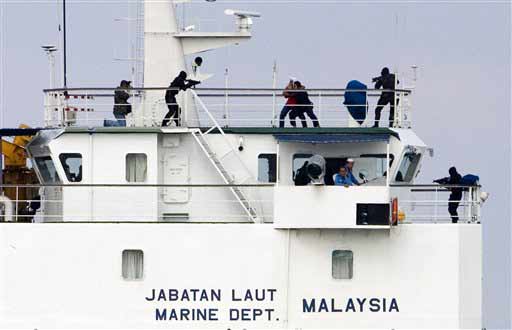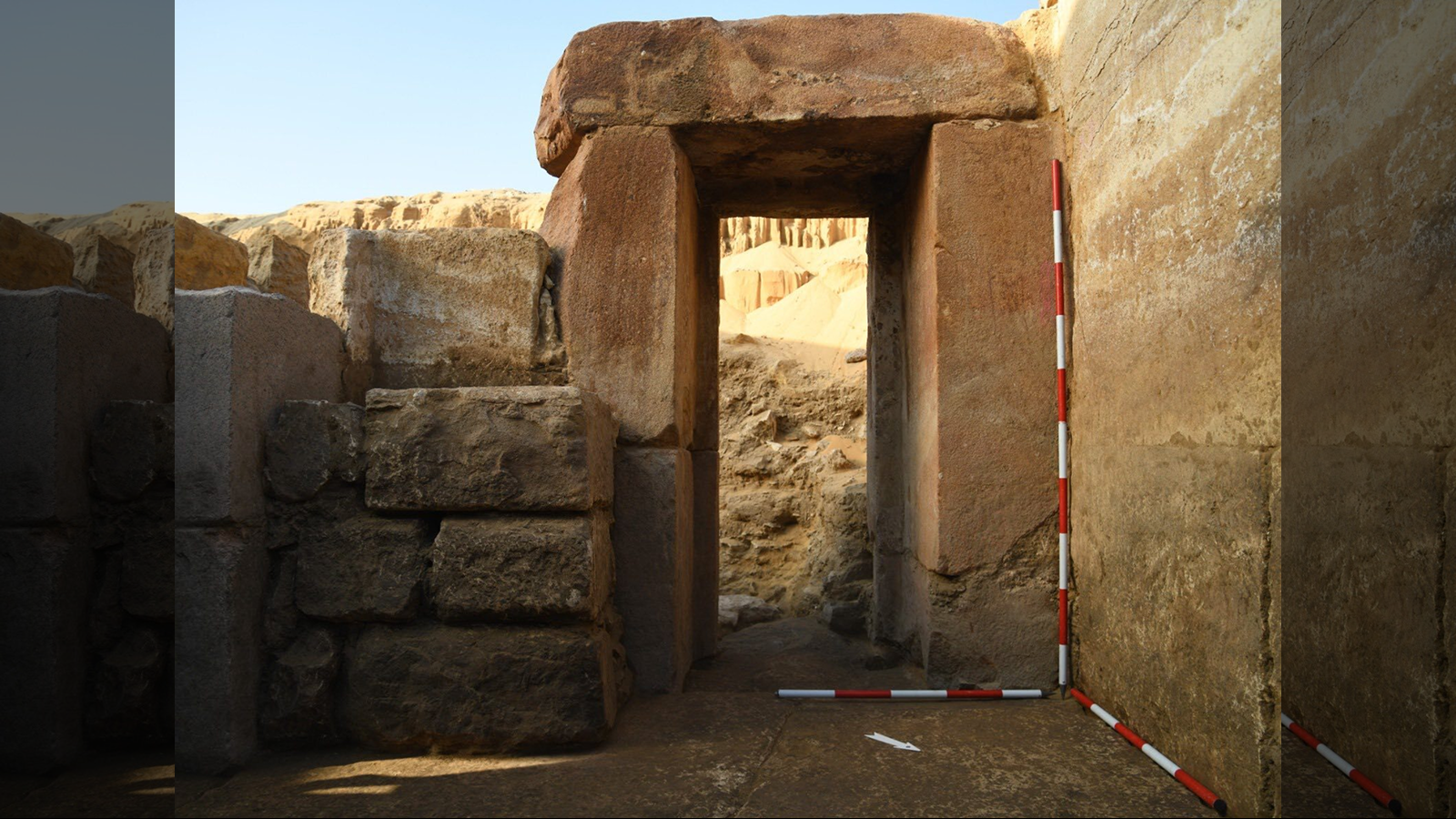Pirates Still Terrorize High Seas

As long as traders have been sailing the open seas in ships laden with goods, there have been pirates sneaking alongside, trawling for booty.
Today, sophisticated pirates who hijack trade ships are responsible for billions of dollars in losses every year. The problem is particularly rife off the northeast coast of Africa, where no fewer than 9 vessels, including one loaded with tanks, were being held for ransom as of yesterday.
Pirates are popularly associated with the eye-patched, peg-legged buccaneers who ransacked the ships of colonizing powers in the 17th and 18th century Caribbean, a period historians call the "Golden Age" of piracy (One historian traces modern capitalism and the current financial crisis to the privateering of this pirate heyday).
But robbers-by-sea were in action around the world for centuries before that, and have continued unabated in the centuries since — though their look, modus operandi and treasures have changed over the years. Gold, booze and weapons Enterprising bands of sailors have preyed on the riches carried by trade ships at least since Classical Antiquity, when ancient Greek and Roman pirates threatened the waters of the Mediterranean, using small islands as their clandestine headquarters. The Vikings were pirates too, by definition, raiding the coasts of Europe by ship very successfully over a period of several hundred years, beginning in the eighth century. Pirates have been at work in Asia just as long.
Despite their worldwide proliferation, though, it is the pirates of the Caribbean that have long captured the popular imagination.
Conditions in the Americas from the 16th to the 18th centuries were ripe for piracy, which has traditionally thrived in places with unstable governments or power vacuums. With the colonial powers of Spain, England, France and the Netherlands jostling over control of the islands, the Caribbean Sea became a relatively lawless territory during this time.
Often comprised of European sailors put out of work at the end of wars, pirate gangs settled in safe harbors such as Tortuga (Haiti) and Port Royal (Jamaica), from where raids were launched on ships traveling between the new colonies and Europe. Spanish ships laden with gold and silver coins were popular targets, but pirates also plundered gems, caskets of wine, equipment and weapons.
Get the world’s most fascinating discoveries delivered straight to your inbox.
Some of the most famous pirate raids of this era include:
- Francis Drake's 1573 sacking of Spain's "Silver Train" fortune in Panama.
- The week-long blockade and plundering of the port of Charleston by Edward Teach (aka Blackbeard) in 1718.
- Henry Morgan's attack on the immense coin stores of Panama City in 1671, which earned him a knighthood in England.
Pirates caused the credit crunch?
Piracy became so lucrative in the Caribbean that many colonial officials sought a cut in the action, offering funding, safe harbor and immunity to pirates (the governments would call them "privateers") who attacked the ships of enemy nations.
The entrepreneurial greed of those privateers in many ways mirrors the investment corporations that have gotten into trouble in the last few weeks, said Peter Hayes, senior lecturer in politics at the University of Sunderland in the UK. "The way that privateering was operating back in the golden age of buccaneering, is that a group of individuals come together, and agree to kit out a ship to sail the seven seas to see if they can pull in some gold," Hayes said. "It was a global gamble for enormous rewards. These predatory voyages are the roots of modern venture capitalism, with these modern multi-national corporations out to get all they can get. That's the sort privateering that led to the credit crunch," he said. Beginning in the later 18th century, once civil rule in the Americas had settled and shaped, serious crackdowns led to the capture and execution of many famous buccaneers.
More pirates than ever
Piracy continued throughout the 19th and 20th centuries, especially in Asia. The big resurgence has come in just the last few years, however, according to statistics gathered by the International Maritime Bureau, which even displays a live piracy map on its Web site to highlight recent attacks.
The waters off Somalia and Indonesia are considered the most active for modern pirates, who are heavily armed and often more interested in the large stores of cash held aboard cargo ships rather than the cargo itself.
Like the pirates of old, these modern-day buccaneers have taken advantage of areas where law enforcement is sparse. In Somalia, the situation has become so dangerous that in July of this year, the UN Security Council passed a resolution allowing international navies to interfere in the region with "all necessary means" to repress piracy.
Pirates holding ships off Somalia are demanding ransom in the millions in exchange for the release of the hostage crews. Pirates now holding a Ukrainian arms ship have threatened to blow up the vessel if the ransom is not paid, with U.S. warships surrounding them to ensure the weapons aren't unloaded. A NATO flotilla of seven ships is on the way to the area to protect both merchant and food aid ships from future pirate operations.
- History's Most Overlooked Mysteries
- Cannon Raised from Sunken Ship of Dread Pirate Blackbeard
- Captain Kidd Ship Found



